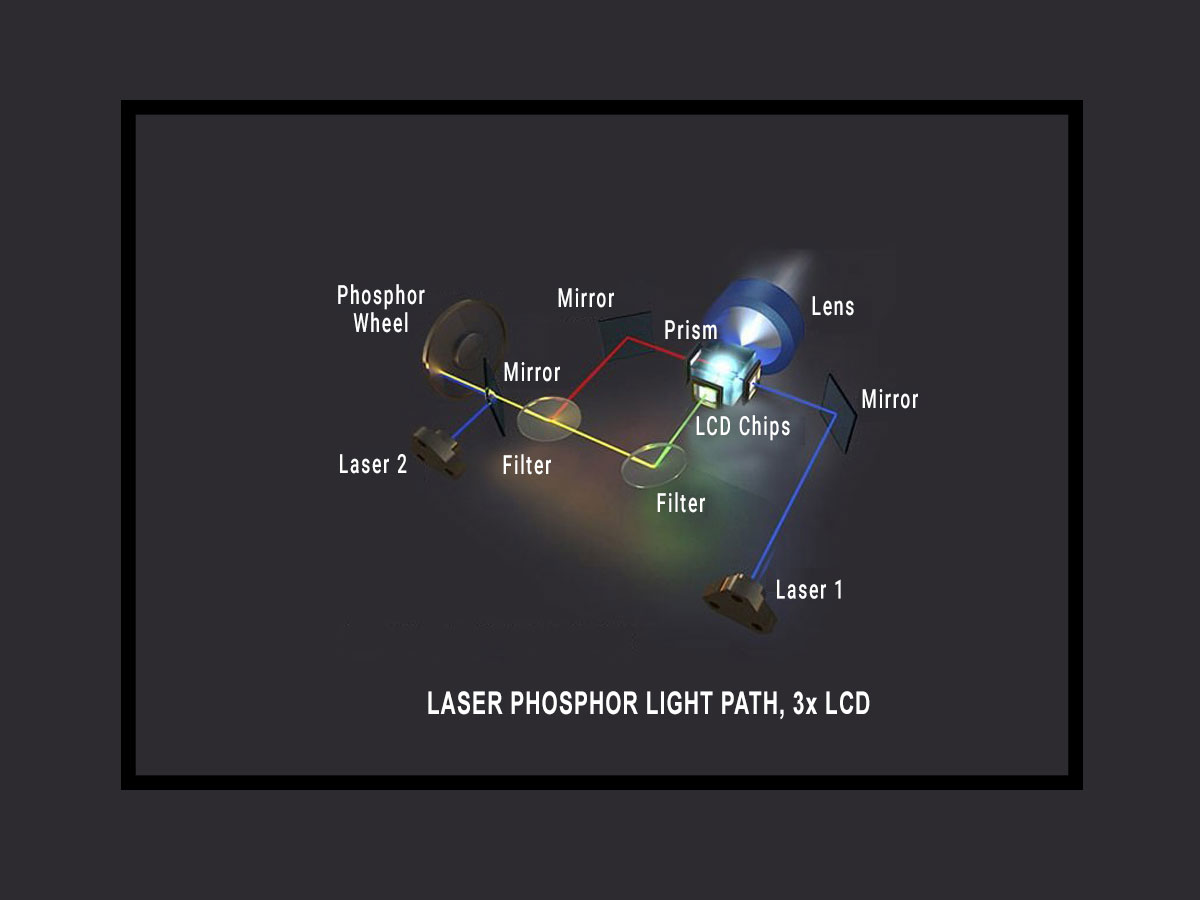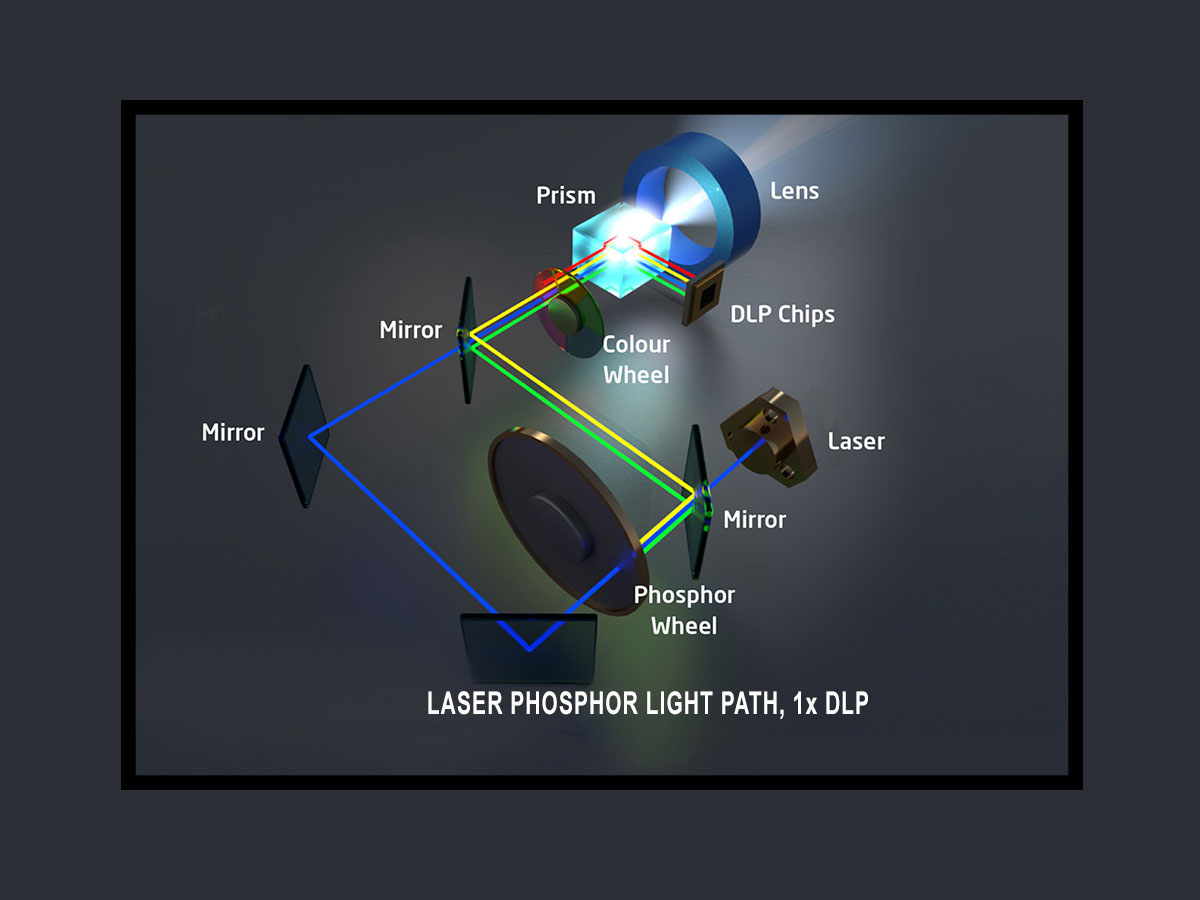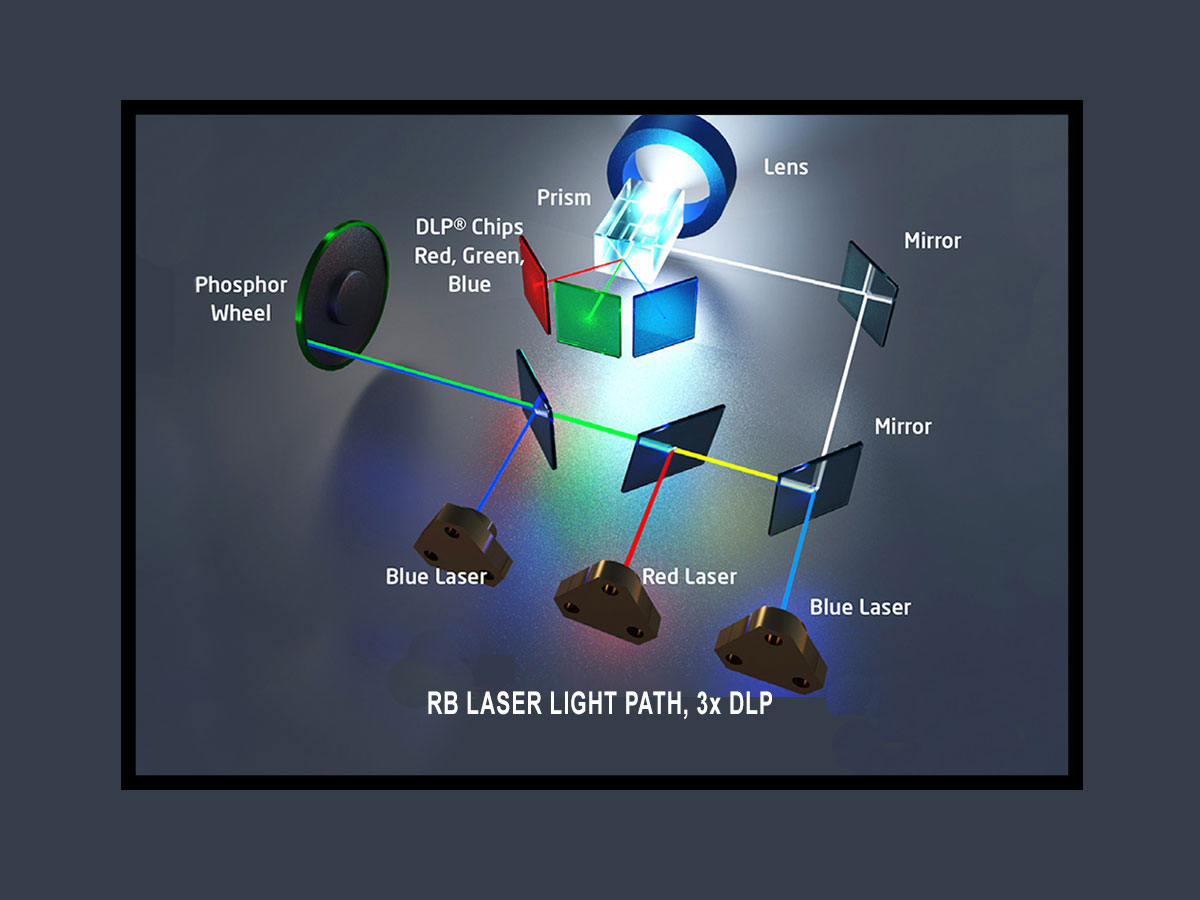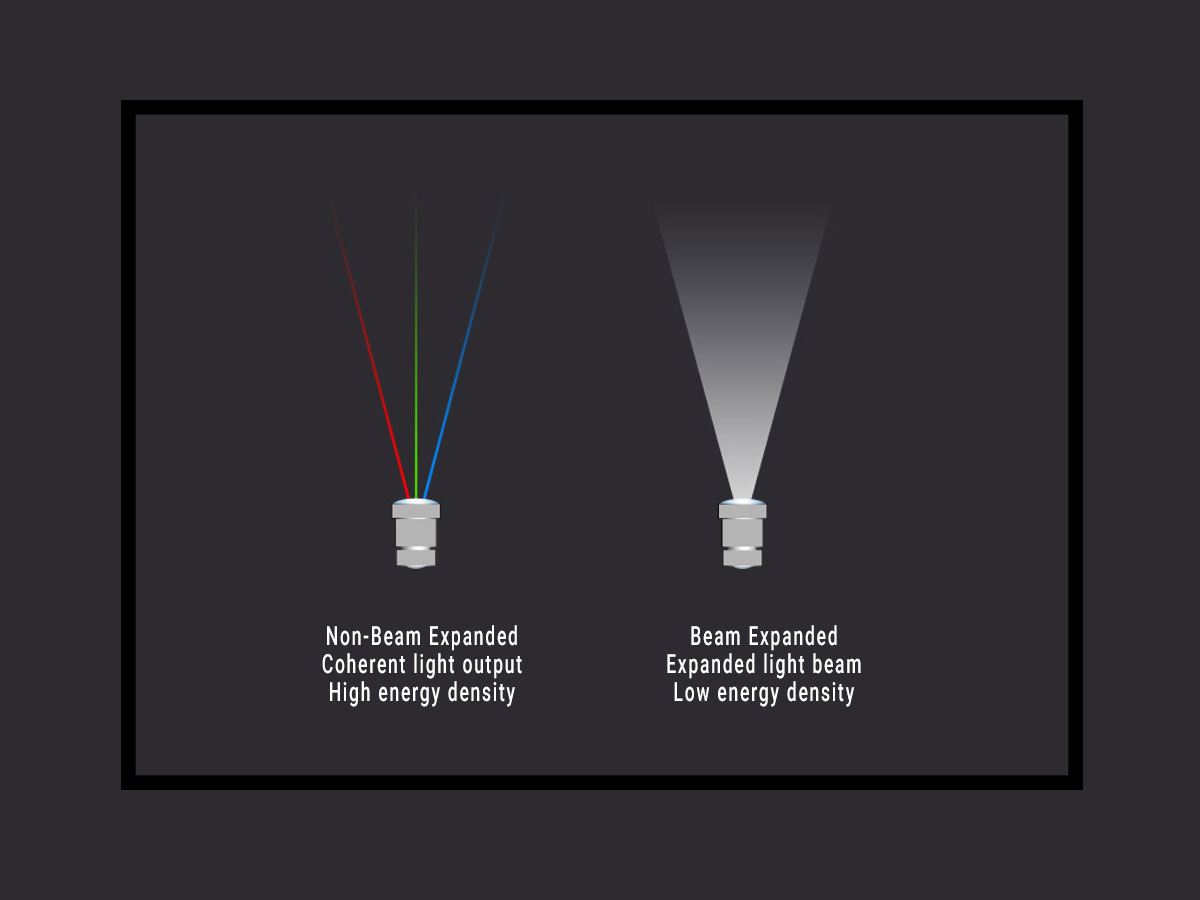What is Laser

Laser Technologies
Light generated with laser diodes inherently have a longer and more stable brightness level that decreases at a much slower rate than conventional lamp based systems. The laser technology offers the highest image quality while its operating life span far exceeds traditional lighting methods. Under ‘Why Laser’ you can find many more benefits listed.

Laser Phosphor Technology based on 3LCD Panel Technology
Cost-effective Laser Phosphor projectors use an array of blue laser LEDs to create the blue color in the final image, but another blue laser is also used to illuminate a yellow phosphor wheel, which emits the yellow light. This yellow light is then split by a filter into green and red light components.
Blue laser based LCD projectors use three LCD panels to generate the red, green and blue picture part of the visualization, leading to vivid color representation.
- Vivid color representation
- High brightness
- Low projector weight
Laser Phosphor Technology based on 3LCD Panel Technology
- Blue Laser
- Phosphor Wheel
- Dichroic Mirror
- Dichroic Filter
- Mirror
- LCD Chips
- Prism
- Projection Lens

Laser Phosphor Technology based on 1-chip DLP Technology
These blue laser based DLP projectors use one micro-mirror-device engine (DLP chip).
Single chip DLP plus color wheel projectors generate the red, green and blue colored parts of a picture step by step, providing natural color representation.
- Natural colors and good brightness uniformity
- High brightness
- Excellent white reproduction
- Compact size
Laser Phosphor Technology based on 1-chip DLP Technology
- Blue Laser
- Dichroic Mirror
- Mirror
- Phosphor Wheel
- Colour Wheel
- DLP® Chip
- Prism
- Projection Lens

Laser Phosphor Technology based on 3-chip DLP Technology
3-chip DLP projectors generate the three coloured parts of a picture in parallel, generating improved colour representation and brightness uniformity.
- Excellent colors and very good brightness uniformity
- High brightness
- DCI (Digital Cinema Initiative) compliant color space

RB Laser Technology based on 3-chip DLP Technology
RB laser technology combines the advantages of brilliant color reproduction with cost efficiency. In RB laser projection a blue laser is used to create the blue color and a red laser is used to create the red color in the final image. The green color is generated by a green phosphor wheel emitting green light. Picture processing is realized with 3 chip DLP technology.
This technique allows very efficient light reproduction by avoiding optical filters resulting in more intense and more natural colors especially in the red color segment plus a higher brightness output.
- Brilliant colors and brightness uniformity
- Higher brightness
- Lower power consumption
- High light efficiency
- Wider color space
RB Laser Technology based on 3-chip DLP Technology
- Red Laser
- Blue Laser
- Dichroic Mirror
- Phosphor Wheel
- Digital Micromirror Device (DMD) for Blue
- Digital Micromirror Device (DMD) for Green
- Digital Micromirror Device (DMD) for Red
- Prism
- Projection Lens

RGB Laser Light Source with 3-chip DLP Technology
RGB laser uses the so-called ‘pure laser’ technology. Red, green and blue lasers are delivered directly to the 3 DLP image chips. The product of this technique creates a light pipe consisting of absolutely pure light that is split into the three RGB components. The light is emitted in very narrow RGB bands with very distinct spectral frequencies. This technology allows the creation of a large colour space that easily exceeds even that of Adobe-RGB or DCI and can already cover the demanding Rec. 2020 colour space.
- Best colours and brightness uniformity
- Highest brightness
- Adobe-RGB, DCI compliant, Rec. 2020
RGB Laser Light Source with 3-chip DLP Technology
- Red Laser
- Green Laser
- Blue Laser
- Despeckler
- Optical Fiber
- Digital Micromirror Device (DMD) for Red
- Digital Micromirror Device (DMD) for Green
- Digital Micromirror Device (DMD) for Blue
- Prism
- Prism (cross dichroic)
- Projection Lens
Hybrid Light Source
A Hybrid Projector uses both laser and LEDs in a single platform. Sharp is not using this technology because of its limited color gamut and difficulties in reproducing accurate colors.

Different Types of Laser Beams
Sharp only uses beam-expanded laser technology which spreads the light energy over a much larger area than a non-beam-expanded equivalent. This results in a far lower energy density than for example in a typical hand-held laser pointer, and therefore pose the same safety risks as a conventional lamp based projection system.
Sharp has developed their laser technology which strictly observes all safety guidelines comes with comprehensive procedures for proper installation, operation, and maintenance of the systems.